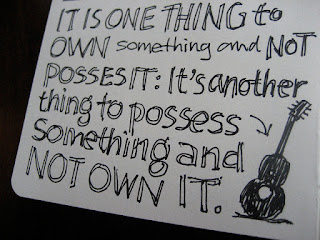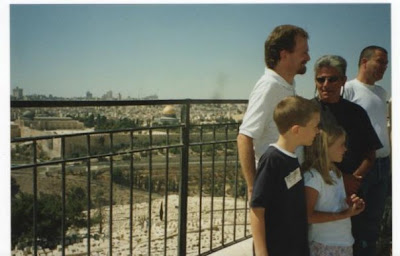Thanks for the birthday blessings.
Look at what one BSN cohort gave me for my birthday. You should see the genius Philemon connection.
My Biblical Perspectives for Nurses class found out it was my birthday , and made me a Philemon-themed cake ( They are studying Philemon (and signs/semiotics), and have clearly learned to creative apply verse 11. i hear the genius behind the sign was Stephanie Bristol-Elliott. Other resident genius nurses include Poursha Brown, Nancy Apolinar Ariana Mendoza — at Fresno Pacific University - North Fresno Campus.
--------------------------
Remember to be praying for Robert as he moves on.
Let him know we'll miss him
-
-We did a last read of Philemon, and watched this video as an example of resources on our Philemon page.:
------------
Also from that page, can Philemon be...among other things, an allegory?
Philemon, an allegory?
Consider the following passage (Philemon 8-18) with these analogies in mind:
- Paul (the advocate) : Jesus
- Onesmus (the guilty slave) : us (sinners)
- Philemon (the slave owner) : God the Father
Martin Luther: "Even as Christ did for us with God the Father,
thus also St. Paul does for Onesimus with Philemon"
Accordingly, though I (Paul) am bold enough in Christ to command you (Philemon) to do what is required, yet for love's sake I prefer to appeal to you—I, Paul, an old man and now a prisoner also for Christ Jesus— I appeal to you for my child, Onesimus, whose father I became in my imprisonment. (Formerly he was useless to you, but now he is indeed useful to you and to me.) I am sending him back to you, sending my very heart. I would have been glad to keep him with me, in order that he might serve me on your behalf during my imprisonment for the gospel, but I preferred to do nothing without your consent in order that your goodness might not be by compulsion but of your own free will. For this perhaps is why he was parted from you for a while, that you might have him back forever, no longer as a slave but more than a slave, as a beloved brother—especially to me, but how much more to you, both in the flesh and in the Lord.-------------
So if you consider me your partner, receive him as you would receive me. If he has wronged you at all, or owes you anything, charge that to my account. I, Paul, write this with my own hand: I will repay it—to say nothing of your owing me even your own self. LINK: Philemon, an allegory?
Here's a "word cloud" representation of word frequency in Philemon. What do you notice?:
(all New Testament word clouds here)
00000000000000000000000000000000000000
We took a field trip! What do you remmber about it?
Reminder: I love Paul Hiebert's diagram (below) of our fair city, Fresno, in "Transforming Worldviews."
(full text here)
Watch it all here:
Post by Dave Wainscott.
Oh, and on the sixth floor of that straightcrooked skyscraper, our church met for a year, Looking down and out the window at Blackstone was radically reorienting. Maybe it did is some spiritual good.
--------------
LAMENT!:
What do you think as soon as you see this headline?:
Jesus Asks Church To Host Anti-Christian Concert
NOW..watch the video below, and do you feel differently?
--
Here, 2nd from left, is Jenn Vue, the recent Health Care admin grad who visited our class. (it won't be long till I get a similar picture of you all!)
Here she is on Facebook, if you want to be in touch
---
Palm Sunday:
--
 We watched the Bib 314"Lamb of God" video ..
We watched the Bib 314"Lamb of God" video ..*watch it HERE (must be signed into Moodle.
We discussed how the palms of Palm Sunday was actually a nationalistic misunderstanding. If Jesus showed up personally in your church Sunday, would you wave the American flag at him, and ask him to run for president?
 Post your answer in the comments section below...at bottom of this post
Post your answer in the comments section below...at bottom of this posta)Van Der Laan:
Palm Sunday
The Passover
For the Jewish people, Passover was more than a religious observance. It was the time of year when they celebrated liberation from Egyptian bondage.
During Jesus' time, they also used this opportunity to express their longing for political freedom from Rome. Jews who claimed to be "messiahs" had so often caused riots during Passover that the Romans brought extra troops into Jerusalem during the Passover season. The Roman soldiers did not hesitate to shed blood to keep the peace.
Jesus on his way to Jerusalem
On the Sunday before Passover, Jesus came out of the wilderness on the eastern side of the Mount of Olives (just as the prophecy said the Messiah would come).
People spread cloaks and branches on the road before him. Then the disciples "began, joyfully, to praise God in loud voices for all the miracles they had seen" (Luke 19:37). The crowd began shouting, "Hosanna," a slogan of the ultra-nationalistic Zealots, which meant, "Please save us! Give us freedom! We're sick of these Romans!"
The Palm Branches
The people also waved palm branches, a symbol that had once been placed on Jewish coins when the Jewish nation was free. Thus the palm branches were not a symbol of peace and love, as Christians usually assume; they were a symbol of Jewish nationalism, an expression of the people's desire for political freedom.
Jesus as the Passover Lamb
Yet Jesus came to the people as the Lamb of God. Jesus, the sinless Messiah who would die on humankind's behalf, appeared on the very day that people chose their spotless Passover lambs!
It's almost as if God said to the world, "Here's my Lamb. Will you chose him?" But instead of turning to Jesus as the Lamb of God, the crowds misunderstood his proclamation that he was the Messiah. They wanted him to be their political-military deliverer.
Jesus Wept
In response, Jesus wept. The tears Jesus shed as the people cried out their political "Hosannas" were tears of grief for the hearts of his people.
Jesus foresaw the terrible devastation of Jerusalem that would result because the people did not recognize him as God's Messiah. The people were looking for a messiah who offered political deliverance and a political kingdom.
However they would have nothing to do with the Messiah who offered forgiveness and deliverance from sin. In his grief over their distorted beliefs, Jesus wept out loud. LINK
b)FPU prof Tim Geddert:
Palm Sunday is a day of pomp and pageantry. Many church sanctuaries are decorated with palm fronds. I’ve even been in a church that literally sent a donkey down the aisle with a Jesus-figure on it. We cheer with the crowds—shout our hosannas—praising God exuberantly as Jesus the king enters the royal city.
But if Matthew, the gospel writer, attended one of our Palm Sunday services, I fear he would respond in dismay, “Don’t you get it?” We call Jesus’ ride into Jerusalem “The Triumphal Entry,” and just like the Jerusalem crowds, we fail to notice that Jesus is holding back tears.
Jesus did not intend for this to be a victory march into Jerusalem, a political rally to muster popular support or a publicity stunt for some worthy project. Jesus was staging a protest—a protest against the empire-building ways of the world.
LINK: full article :Parade Or Protest March
c)From Table Dallas:
Eugene Cho wrote a blog post back in 2009 about the irony of Palm Sunday:-Link
The image of Palm Sunday is one of the greatest ironies. Jesus Christ – the Lord of Lords, King of Kings, the Morning Star, the Savior of all Humanity, and we can list descriptives after descriptives – rides into a procession of “Hosanna, Hosanna…Hosanna in the Highest” - on a donkey – aka - an ass.He goes on to say it’s like his friend Shane Claiborne once said, “that a modern equivalent of such an incredulous image is of the most powerful person in our modern world, the United States President, riding into a procession…on a unicycle.”
================












 \
\








